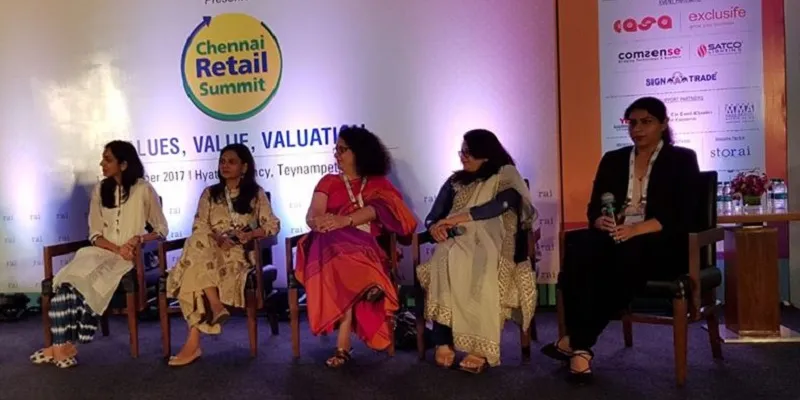Women at work, it’s time to unapologetically grab that corner office
Why did only two percent of women entrepreneurs receive funding last year? Why does the corner office have more men than women and why is inclusion just a conversation between women?
It is the end of 2017. Men and women work in the same workplaces, in sectors that were once predominately male-driven – manufacturing, retail, logistics, transport and food. They possibly have the same tasks and line of work. And yet, there’s an imperative need to address the white elephant in the room. For even as we approach 2018, equality for women in the workplace isn’t the way it should be.
From winning promotions, equal pay and getting that much coveted corner office, “everything” is an uphill battle. The workplace is definitely not a level playing field.
Shreyl Sandberg, COO, Facebook, and Founder LeanIn.org, has said that when a woman starts negotiating hard, she gets the “too-aggressive” penalty.
Interestingly, women make up 46 percent of the workforce of the entry level. In the C-Suite level, it is 81 percent men versus 1 percent women. Does this mean women don’t work as hard as men or are not as capable? It clearly isn’t so; data and research show this. A proven study has shown that women push harder to prove themselves, are better at people management and can multitask.

The leaky bucket
The disparity, in fact, begins at entry levels, where men are 30 percent more likely than women to be promoted to management lines. The report, quoted in the Wall Street Journal, (WSJ) says: “It continues throughout careers, as men move up the ladder in larger numbers and make up the lion’s share of outside hires.”
The glass ceiling is as real as it gets. This was the topic of conversation at the Retailers’ Association of India Summit in Chennai this Friday. The panel, comprising Lavanya Nalli, Vice Chairperson, Nalli Silks; Deepika Nagasamy, Director, Thalappakatti Hotels; Jermina Menon, VP Marketing, Virtuous Retail; Samia Sait, Director, Gatsby Collection Pvt Ltd, and Owner, Tryst Café; and Mital Surendira, Brand Owner, Sanskrriti Celebrating in Style; debated the challenges that women face in the retail industry in specific.

Lavanya spoke of the need for policies to focus on inclusivity of women.
“There are a lot of dropouts by middle-level management and further into top-level. They are expected to always be doing two jobs. There are serious trade-offs that women have to make, that men never have to make ever – between a career and family,” she said.
The problem is becoming too obvious to ignore. A WSJ report said close to 75 percent CEOs today include gender equality in their top 10 business priorities, but sadly gender outcomes across companies aren’t changing.
Can you handle it?
While most women on the panel manage and own family businesses, they have faced biases. Whether it was reasons like marriage or motherhood, these women faced challenged but felt it was important to forge ahead.
“When you are the fifth generation of a family business, most people would have seen you grow up. From the fact that the girl will get married and go away to the fact that ‘the little girl’ can’t handle it. There are several biases one needs to handle to prove our worth,” Samia explained.
Women hit the glass ceiling earlier. The problem is that even when top executives say the right things, employees don’t think there is a plan towards gender equality and don’t feel confident calling out gender biases. Many believe that front-line managers haven’t got the message.
The only way to change it is to lead by example.
Jermina said there are many times she voices out that a particular woman needs to take on the role of store manager as the woman would have proven her worth.
Learn to think better of yourself
There are several socio-economic biases that come in and need to be worked around. Women themselves take a back seat most times.
“Women don’t ask or negotiate like the men do,” Jermina said. And when they actually do, there is a strong pushback. Lavanya agreed. “There are unique differences and biases for female employees. The mindset when it comes to promotion for a man is great. But for a woman, it is over-cautious, because women think 10 times if they can handle it.”
The Wall Street Journal report said people and organisations, by and large, are “afraid” to take biases head-on.
Mital said the only way is to lead is “by example”.
“For me, it is like leaving them at the deep end of the pool and letting them to learn to swim. I leave saying you lock up or take care of the store, she said, adding that women need to learn to push back.
The WSJ report added that men and women across roles shy away from calling out gender-based biases when it occurs. Less than half employees see day-to-day evidence of companies embrace diverse leadership styles.
The women on the panel said maybe it is time to change this by changing the structure of such panels. For inclusion isn’t just the responsibility of women. Men today need to be part of the conversation, a rather active part.
When performance and data become determining factors, biases should have no play. Committing to gender equality is all very well, but progress will remain slow unless we – companies and people – are willing to address confront blind spots on gender diversity.







